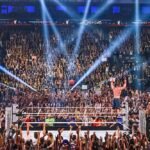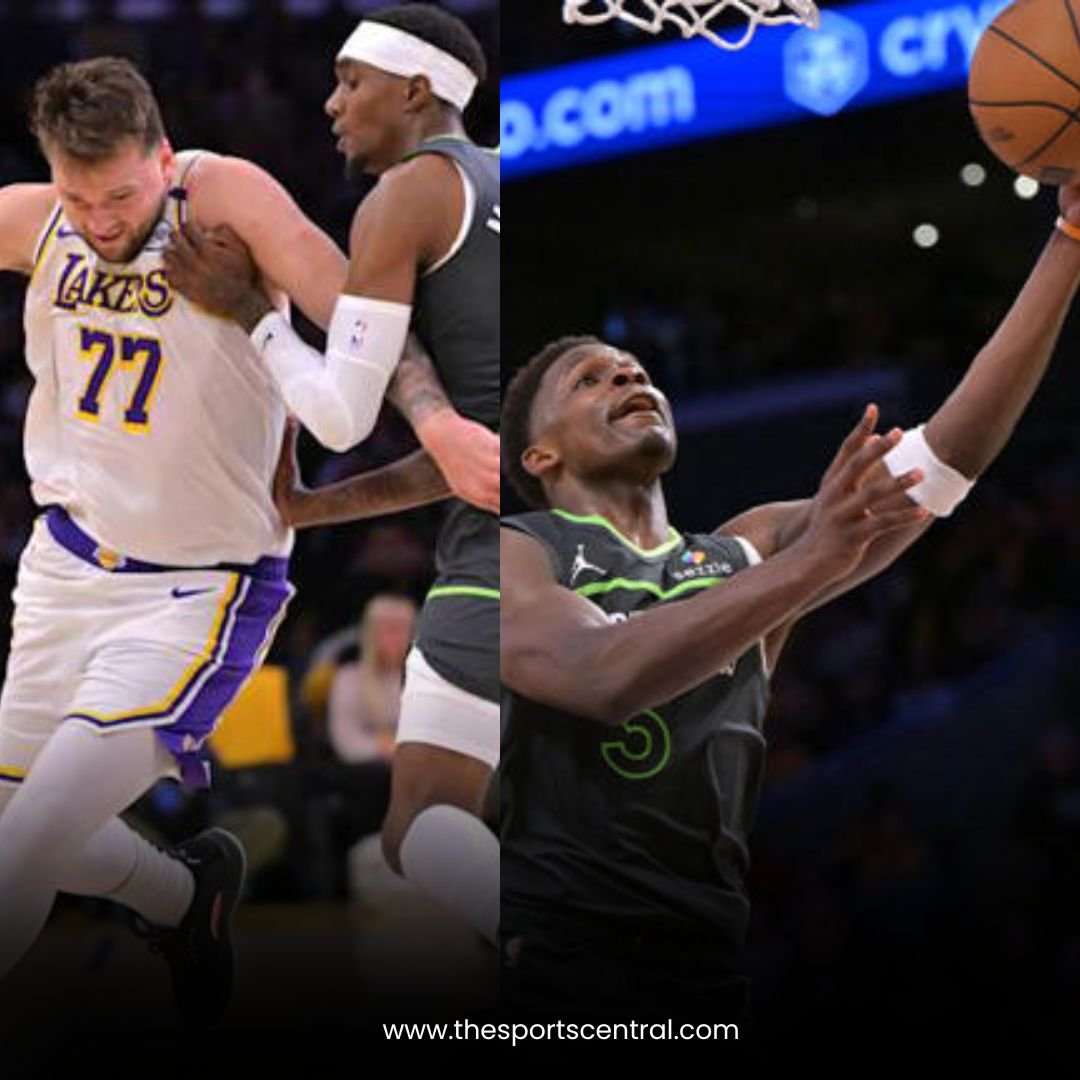The Minnesota Timberwolves sent a thunderous message in Game 1 of their first-round Western Conference playoff series against the Los Angeles Lakers. With a masterclass in modern basketball execution, the Timberwolves overwhelmed the Lakers 117–95 on their home court at Crypto.com Arena. Anthony Edwards and his team dominated from start to finish, setting the tone for the series and exposing glaring weaknesses in the Lakers’ game plan.
Timberwolves Set the Court on Fire with Long-Range Accuracy
From the opening tip, the Timberwolves imposed their style on the game. They spaced the floor beautifully, moved the ball with surgical precision, and created high-quality shots from beyond the arc. Minnesota’s shooters attacked relentlessly and punished the Lakers for every defensive lapse.
Jaden McDaniels led the shooting clinic with 25 points on an incredible 11-of-13 shooting night. His ability to find open space, cut through gaps, and knock down perimeter jumpers added layers to the Timberwolves’ offense. He moved without the ball with elite awareness and made the Lakers pay every time they failed to close out.
Naz Reid provided fireworks off the bench. He nailed six three-pointers and scored 23 points in just 22 minutes. Reid’s scoring explosion lifted Minnesota during key stretches when Los Angeles attempted to mount a comeback. His confidence, quick release, and versatility stretched the Lakers’ defense thin and created matchup nightmares.
Anthony Edwards balanced scoring and playmaking to perfection. He contributed 22 points, grabbed eight rebounds, and distributed nine assists. Edwards attacked closeouts, finished through contact, and constantly found teammates in rhythm. He orchestrated the offense like a seasoned playoff veteran.
As a team, the Timberwolves drained 21 three-pointers out of 42 attempts. They hit their threes at a 50% clip and broke their own franchise playoff record for made three-pointers. They created space with consistent off-ball screens, sharp cuts, and intelligent spacing. Every player bought into the team philosophy and executed with purpose.
Lakers Collapse Under the Weight of Defensive Lapses
The Lakers entered the game with the star power of LeBron James and Luka Dončić but lacked cohesion on both ends. The team struggled to communicate on switches, failed to rotate on time, and repeatedly lost assignments on the perimeter. Minnesota took advantage of this disarray with every possession.
Luka Dončić tried to carry the offense. He poured in 37 points with his trademark footwork, change of pace, and step-back threes. However, he played in isolation too often and received little help from the supporting cast. Minnesota trapped him early and forced him into tough shots. Though he scored efficiently, he could not lift the Lakers alone.
LeBron James added 19 points, but he looked out of rhythm. The Timberwolves closed out aggressively and denied him easy looks near the rim. He played with his usual intensity but faced strong double-teams and lacked offensive synergy with his teammates. When LeBron attempted to find cutters, his passes often missed targets due to poor spacing and late movements.
Austin Reaves and D’Angelo Russell failed to make an impact. Reaves missed open jumpers, while Russell turned the ball over twice during critical possessions in the third quarter. The Lakers committed careless turnovers, forced shots early in the shot clock, and allowed Minnesota to build momentum with transition buckets.
Defensively, the Lakers fell apart. The Timberwolves generated 27 wide-open three-point attempts — a number that reflects poor communication and slow rotations. The Lakers never adjusted their closeouts or weak-side help. Minnesota’s players capitalized and punished them with corner threes and top-of-the-arc daggers.
The Lakers also lost the battles inside. Minnesota outscored them in points in the paint 44–32 and grabbed more offensive rebounds, leading to a 23–20 edge in second-chance points. Rudy Gobert and Karl-Anthony Towns controlled the boards and contested every interior look.
Timberwolves Execute a Complete Game Plan
Coach Chris Finch drew up a masterpiece. He installed a dynamic offensive system with multiple scoring threats and encouraged constant movement. He gave Anthony Edwards the freedom to attack mismatches while instructing shooters like Reid and McDaniels to stay ready off the catch.
Finch rotated his bench seamlessly and trusted his role players. The team’s chemistry radiated through crisp ball movement and rapid decision-making. The Timberwolves did not play hero ball. They created good looks through discipline and trust.
Defensively, Minnesota forced the Lakers into isolation-heavy possessions. They pushed Dončić toward the sideline, doubled James in the post, and dared the Lakers’ supporting cast to beat them. The Timberwolves played physically without fouling and stayed committed to contesting every shot.
The bench also stepped up. Mike Conley provided veteran leadership and stability. He directed traffic, slowed the pace when needed, and ensured the team maintained composure. Minnesota never lost control of the game and finished every quarter strong.
Lakers Must Regroup for Game 2
The Lakers walked off the court with heads down and shoulders slumped. They failed to match Minnesota’s energy and effort. Their fans booed during the fourth quarter, frustrated by the lack of urgency and composure.
Coach Darvin Ham must make critical adjustments before Game 2. He needs to revise the defensive scheme, especially on the perimeter. The team must switch more aggressively, communicate clearly, and contest every shot. They cannot allow Minnesota’s shooters to settle into rhythm again.
On offense, the Lakers must share the ball better. Dončić and James can create plays, but the system cannot rely solely on isolation. Reaves, Russell, and Rui Hachimura must move off the ball, cut decisively, and hit open shots.
The Lakers also must increase physicality. They looked soft on rebounds, hesitant in closeouts, and reactive instead of proactive. They must set the tone early in Game 2 to prevent Minnesota from controlling the pace.
LeBron and Dončić must lead vocally and mentally. They need to inspire teammates, call out defensive switches, and demand accountability. The Lakers can still turn this series around, but they must respond with urgency and fire in Game 2.
Timberwolves Send a Message
Minnesota proved that star power alone does not guarantee playoff success. The Timberwolves played harder, smarter, and faster. They controlled the tempo, executed their system, and silenced the Los Angeles crowd.
Anthony Edwards emerged as a leader. His blend of aggression and selflessness elevated the entire team. He drove to the basket with authority, made the right reads, and played with supreme confidence.
Jaden McDaniels and Naz Reid proved that role players can swing playoff games. Their energy, shot-making, and hustle ignited the Timberwolves’ bench and demoralized the opposition.
This Game 1 win gives Minnesota a 1–0 series lead and a huge psychological advantage. They know how to beat the Lakers, and they now believe they can close out the series.
Final Thoughts
The 2025 NBA Playoffs opened with a shocker in Los Angeles. The Timberwolves dismantled the Lakers in every facet of the game and announced themselves as legitimate title contenders. Their blend of youth, defense, and shot-making gives them the tools to go far.
The Lakers cannot afford to wait. They must respond in Game 2 or risk falling into a dangerous 0–2 hole. The margin for error shrinks in the playoffs, and Minnesota showed no intention of slowing down.
Game 2 awaits. The Timberwolves want to seize full control. The Lakers must fight to reclaim their pride.










